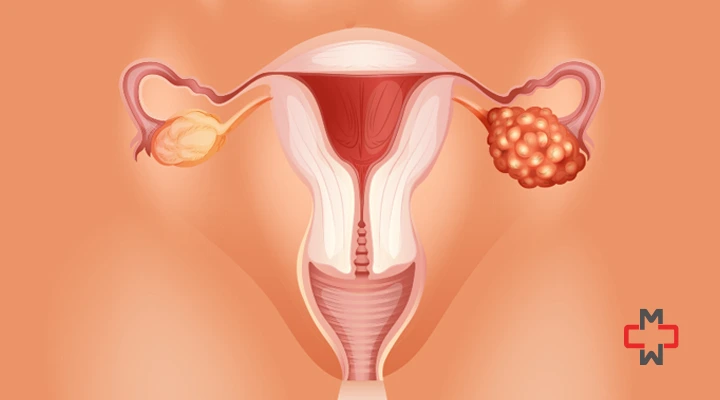📊 Ovarian Cancer Statistics (2025)
- Approximately 20,890 women are expected to be diagnosed with ovarian cancer in the U.S. in 2025. Source
- Around 12,730 women are projected to die from ovarian cancer in 2025. Source
- The 5-year survival rate for ovarian cancer is 49%, but it increases to 93% when detected in early stages. Source
Ovarian cancer is a complex and often silent disease that affects thousands of women across the United States each year. At Manhattan Medical Arts, under the guidance of Dr. Syra Hanif, our practice has encountered numerous cases of ovarian cancer, allowing us to gather extensive experience in diagnosis, treatment, and patient care. This article delves into critical aspects of ovarian cancer, including risk factors, symptoms, diagnostic methods, treatment options, and essential preventive measures.
What Is Ovarian Cancer?
Ovarian cancer occurs when abnormal cells begin to grow uncontrollably in the ovaries, fallopian tubes, or peritoneum. It is the second most common gynecologic cancer in the U.S., accounting for more deaths than any other female reproductive cancer. Unfortunately, there is no standard screening for ovarian cancer, making early detection challenging.
Types of Ovarian Cancer:
- Epithelial Ovarian Cancer: Originates from cells on the ovary’s surface. Accounts for 90% of cases.
- Germ Cell Tumors: Develop from egg-producing cells; rare but often diagnosed in younger women.
- Sex-Cord Stromal Tumors: Arise from hormone-producing cells within the ovary.
Book an Appointment with Our Primary Care Physician
Symptoms of Ovarian Cancer
Early-stage ovarian cancer often presents no noticeable symptoms. However, as the cancer progresses, symptoms may include:
- Abdominal bloating or swelling
- Pelvic pain or discomfort
- Difficulty eating or feeling full quickly
- Urinary urgency or frequency
- Unexplained weight loss
- Fatigue
- Back pain
These symptoms can also be attributed to other conditions. If these signs persist for more than two weeks, consult a healthcare provider promptly.
Diagnostic Approaches for Ovarian Cancer
Diagnosing ovarian cancer often involves a combination of imaging, blood tests, and surgical evaluation. At Manhattan Medical Arts, our diagnostic methods include:
- Pelvic Examination: Checking for abnormalities in the size or shape of the ovaries.
- Ultrasound and CT Scans: Identifying masses or tumors.
- CA-125 Blood Test: Detecting elevated levels of a tumor marker commonly associated with ovarian cancer.
- Surgical Biopsy: Confirming diagnosis and staging.
Schedule a Diagnostic Screening Today
Risk Factors and Prevention
- Incidence Decline: Ovarian cancer incidence has decreased by approximately 1.6% per year from 2012 to 2021. Source
- Mortality Reduction: The death rate from ovarian cancer has declined by 43% since 1976, with a 2.4% annual decrease from 2004 through 2022. Source
Risk factors for ovarian cancer include age, family history, genetic mutations (BRCA1 and BRCA2), and a history of endometriosis. Women over 63 are at a higher risk, with nearly half of ovarian cancer cases diagnosed after this age.
Preventive Measures:
- Maintaining a healthy weight
- Considering genetic testing for high-risk individuals
- Discussing birth control options with a healthcare provider
- Surgical options, such as salpingectomy, in high-risk cases
Treatment Options for Ovarian Cancer
Treatment depends on the type and stage of ovarian cancer. Our team at Manhattan Medical Arts employs the following approaches:
- Surgery: Including hysterectomy, oophorectomy, and debulking procedures.
- Chemotherapy: Systemic treatment to target cancer cells.
- Targeted Therapy: Using drugs to attack specific cancer cell mechanisms.
- Hormone Therapy: Blocking estrogen to prevent cancer growth.
FAQs on Ovarian Cancer
What is the life expectancy of someone with ovarian cancer?
Life expectancy depends on the stage at diagnosis. The 5-year survival rate is approximately 49% for all stages combined, but it increases to 93% when detected in early stages.
How fast does ovarian cancer spread?
Ovarian cancer can spread rapidly, particularly high-grade serous carcinoma, which accounts for most cases. Early detection and treatment are crucial.
What should I avoid if I have ovarian cancer?
Consult with your physician regarding dietary restrictions and lifestyle changes. Limiting alcohol, reducing processed foods, and focusing on nutrient-dense meals can be beneficial.
Can ovarian cancer be completely cured?
Treatment outcomes vary, but with early detection and advanced therapies, some patients achieve long-term remission.
Book a Virtual or In-Person Consultation
Key Takeaways and Resources
- Ovarian cancer is a serious but treatable condition if detected early.
- Regular check-ups, genetic testing, and awareness of symptoms can improve outcomes.
- Visit our Primary Care Physician or consult with Dr. Syra Hanif for personalized care and treatment plans.
Disclaimer
This blog is for informational & educational purposes only, and does not intend to substitute any professional medical advice or consultation. For any health related concerns, please consult with your physician, or call 911.
-
About The Author
Dr. Syra Hanif M.D.Board Certified Primary Care Physician
Dr. Syra Hanif is a board-certified Primary Care Physician (PCP) dedicated to providing compassionate, patient-centered healthcare.
Read More







